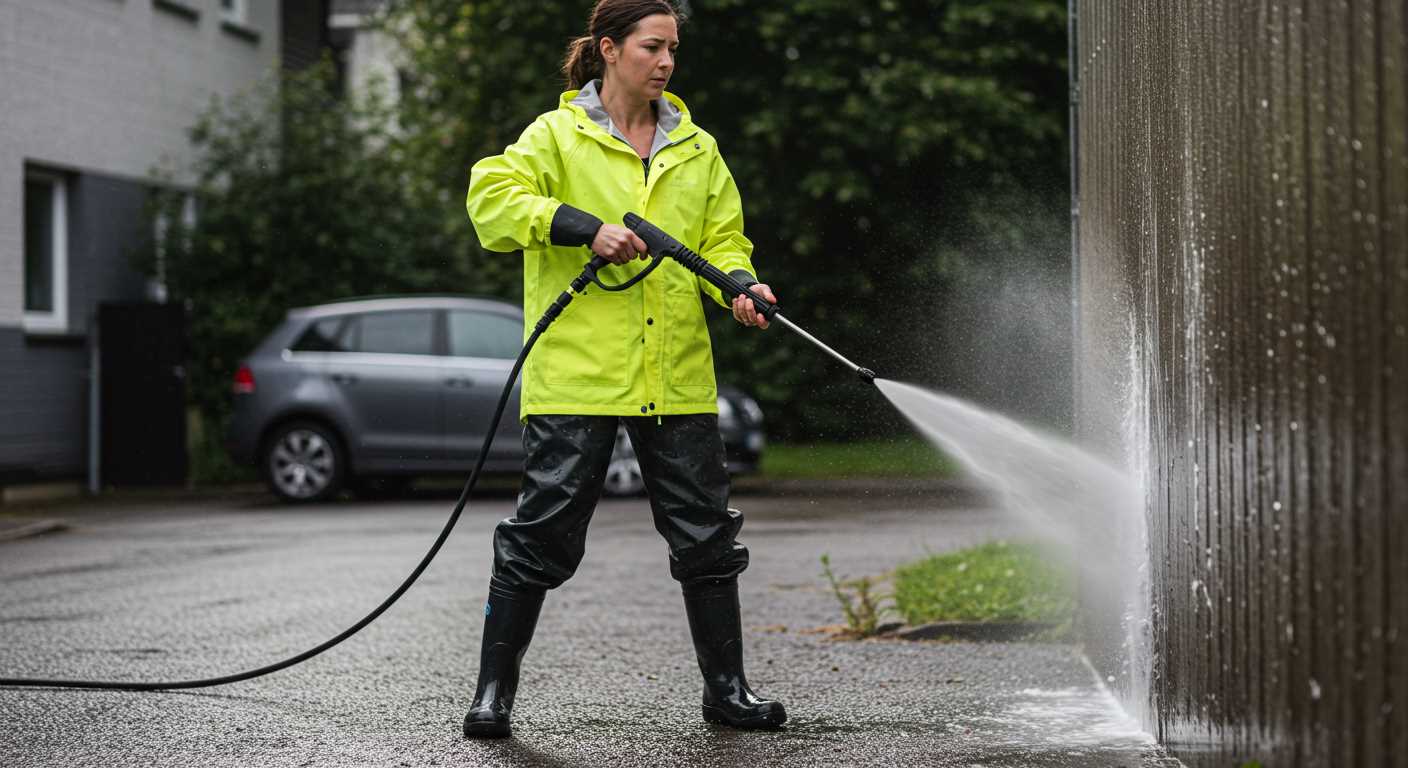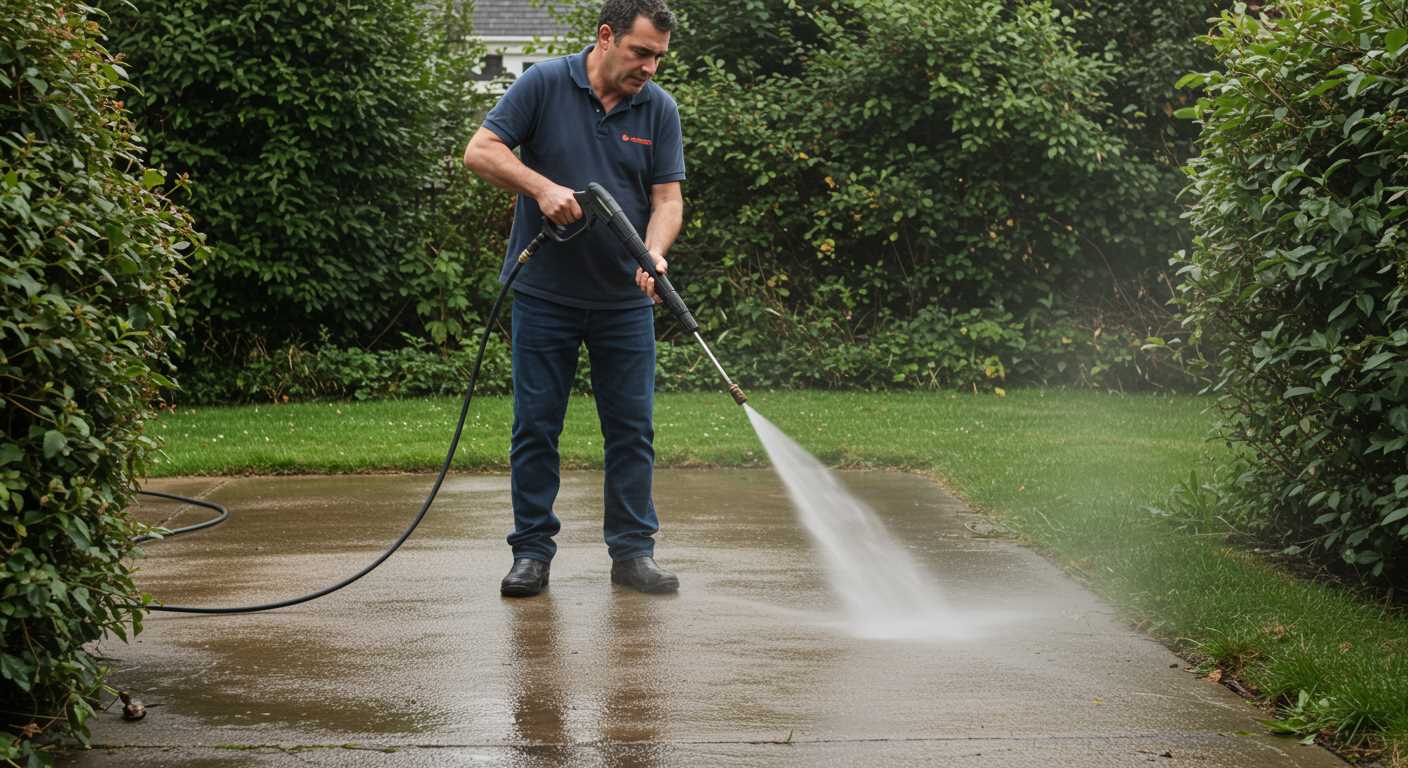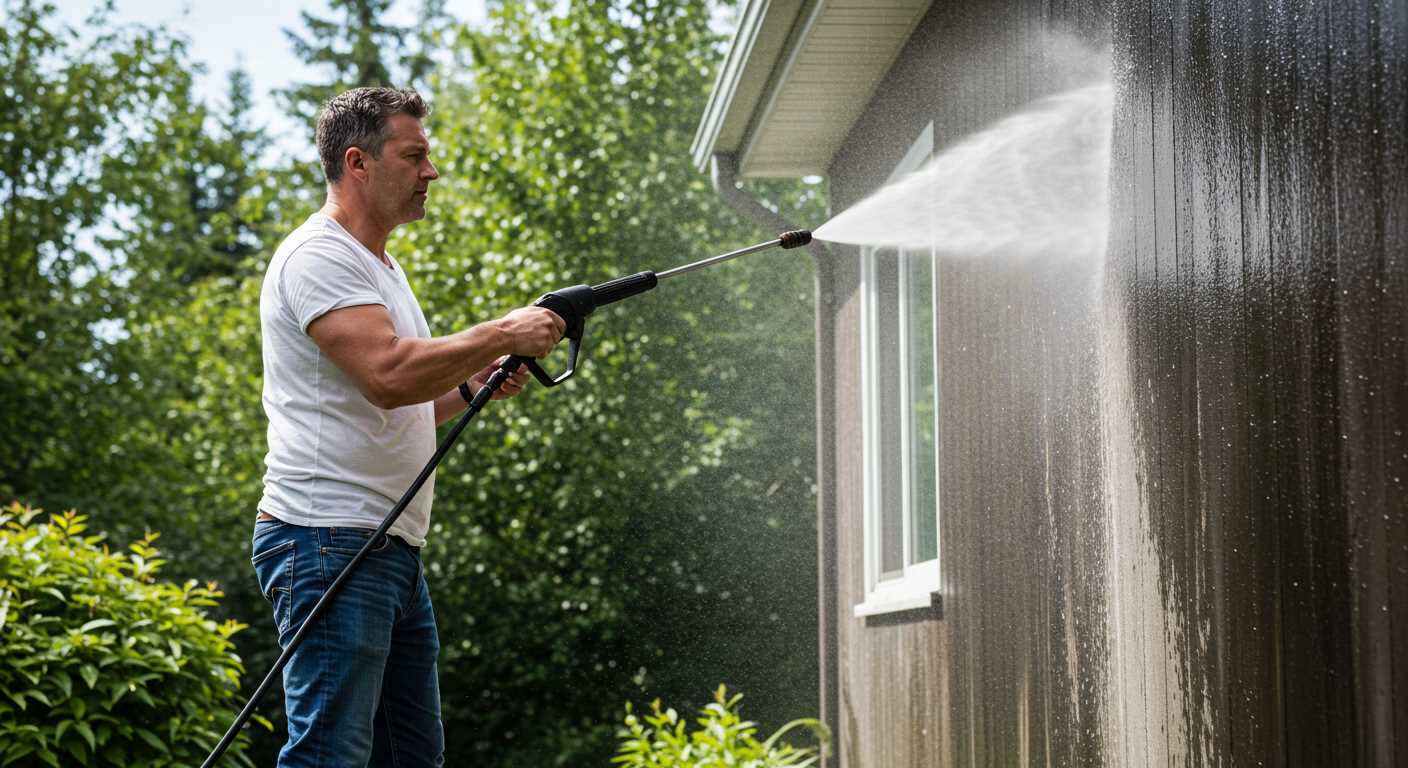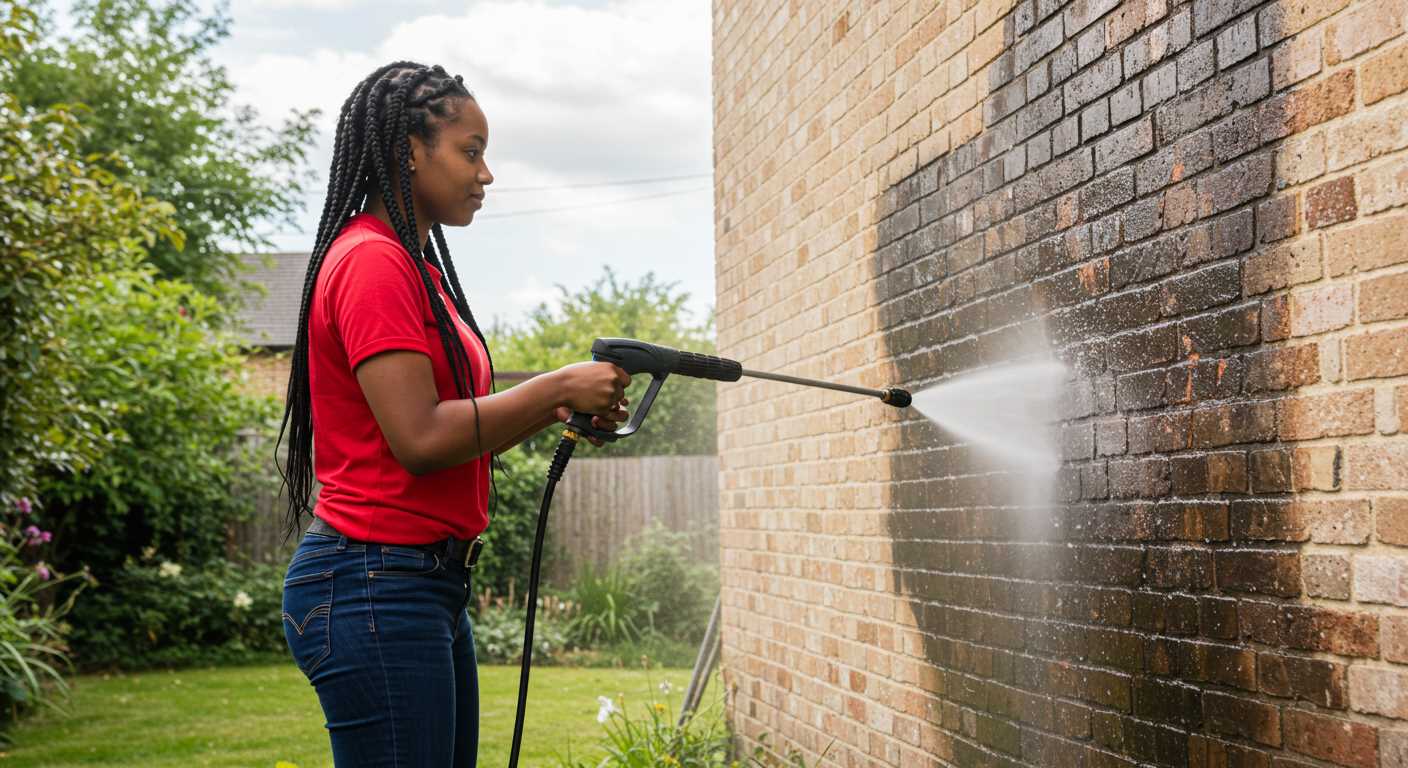



Opting for a nozzle with the appropriate angle is paramount; a 0-degree nozzle delivers a pinpoint spray for stubborn stains, while a 25-degree option strikes a balance for general cleaning. Considering the task at hand, I often recommend the 15-degree nozzle for heavy-duty jobs that require a more aggressive cleaning action.
Always verify your equipment’s compatibility before making a selection. Different models have specific connection types, and ensuring the correct fit is crucial to avoid damage. Standard quick-connect nozzles are widely available, but be aware of the specifications outlined in your owner’s manual.
The material of the nozzle also plays a significant role in longevity and performance. Stainless steel nozzles offer durability and resist corrosion, making them a solid choice for frequent use. I advise against plastic options for heavy-duty applications, as they tend to wear out faster and can diminish the effectiveness of your cleaning tasks.
Finally, never overlook the versatility of adjustable nozzles that allow you to switch spray patterns seamlessly. These can be particularly advantageous for various tasks around your home or business, eliminating the need for multiple nozzles and streamlining your equipment inventory.
Choosing the Right Attachment for Optimal Cleaning
For the best results, select an attachment that corresponds to the cleaning task at hand. Understand the various spray angles: a 0-degree tip delivers a concentrated jet suitable for tough stains, while a 25-degree tip provides a wider spray ideal for general cleaning. A 40-degree tip is perfect for delicate surfaces, preventing damage during use.
Consider Material and Design

Examine the construction of the attachment. Brass fittings offer durability and resist corrosion, while plastic options are suitable for less intensive tasks. Ensure compatibility with your equipment, as some brands may have proprietary connectors.
Adjust According to Surface Types
Adjust the intensity based on the surface type. For instance, hard surfaces, like concrete, tolerate stronger jets, while softer materials, such as wood, require gentler sprays to avoid harm. Always test a small area first to gauge the best approach.
Understanding Different Nozzle Types and Their Uses
When selecting the right attachment, focus on the degree of spread, which significantly impacts cleaning ability. Each type has a specific function, and knowing these can improve performance while reducing effort.
| Nozzle Type | Angle | Optimal Use |
|---|---|---|
| 0° (Red) | 0° | Concentrated stream for tough stains on concrete or driveways. |
| 15° (Yellow) | 15° | Effective for stripping paint or heavy-duty cleaning on surfaces. |
| 25° (Green) | 25° | General-purpose for most surfaces, like siding and vehicles, balancing pressure and area coverage. |
| 40° (White) | 40° | Safe for delicate surfaces such as wood decks and windows. |
| Soap (Black) | Rotating | Applies detergent for pre-soaking areas prior to high-pressure cleaning. |
Always remember, using the correct attachment prevents damage and enhances cleaning efficiency. I recommend experimenting with various types on a non-visible section before tackling more significant projects that could benefit from a tailored approach.
Another key aspect is the distance from the surface. Close-range applications with a narrow jet can be effective for deep cleaning but should be moderated on fragile materials. For broader cleaning tasks, adjust the distance to accommodate the nozzle type and surface condition.
Determining the Right Spray Angle for Your Project

Select the spray angle based on the surface and the nature of the cleaning task. For precise application, a narrow angle (0°-15°) is effective, ideal for tough stains on hard surfaces like driveways or brick. This focused stream delivers maximum pressure, making removal efficient.
Suggested Spray Angles
- 0° (Red): Utilise for heavy-duty cleaning tasks, such as removing graffiti or stripping paint from concrete surfaces.
- 15° (Yellow): Fits well for cleaning decks and patios, providing a balance between pressure and coverage.
- 25° (Green): Suitable for siding, fences, and vehicles, offering a wider spray pattern to cover larger areas while still maintaining some pressure.
- 40° (White): Ideal for light cleaning tasks, such as washing windows or gently rinsing surfaces.
- Soap Nozzle (Black): Use for applying detergent, typically the broadest spray that helps distribute cleaning solutions evenly.
Project-Specific Recommendations
For delicate materials, like wood or painted surfaces, aim for a wider spray angle to minimise damage. On the other hand, solid surfaces benefit from tighter angles for precision. Assess the surface texture and the level of dirt accumulation before selecting the angle; a thorough understanding of these factors ensures the right match.
Always test on a small, inconspicuous area before cleaning the entire surface. Adjust angles accordingly if you notice any damage or inefficiency. The right angle enhances the effectiveness of your equipment and protects the integrity of the items you’re cleaning.
Choosing Between Fixed and Adjustable Nozzles
For versatile cleaning tasks, I recommend leaning towards an adjustable nozzle. This option allows for quick changes in spray patterns, adapting to various surfaces without the need for swapping accessories. With a simple twist, I can modify the spray angle from a concentrated stream to a wider pattern, fitting everything from delicate surfaces to tougher grime.
If you’re focused on a specific job or surface type, fixed nozzles might be the better choice. They come with predetermined angles – typically 0°, 15°, 25°, and 40° – designed for specific applications. I find these are particularly useful for dedicated tasks where precision is key, like removing paint or tackling heavily soiled areas.
Benefits of Adjustable Nozzles

- Quick adjustments without changing attachments.
- Space-saving; fewer components to store and manage.
- Versatility for various tasks, whether light misting for delicate jobs or high-pressure streams for heavy cleaning.
Benefits of Fixed Nozzles

- Clear, predictable spray patterns for expert-level control.
- Durability; fewer moving parts may result in a longer lifespan.
- Cost-effective for specific applications where versatility isn’t necessary.
Each type has unique advantages depending on the cleaning requirements. If I find myself switching tasks frequently, the adjustable kind streamlines my process. For projects with well-defined needs, I opt for fixed varieties to ensure precision and efficiency.
Identifying the Appropriate Nozzle Colour Codes

The colour codes of fittings indicate specific spray patterns and pressure levels. Red represents a zero-degree spray, delivering powerful jets ideal for tough stains on hard surfaces. Use it with caution to avoid damage. Yellow indicates a 15-degree angle, perfect for removing paint or stubborn grime on concrete. Green denotes a 25-degree spray, versatile for various tasks such as cleaning cars and patios. White corresponds to a 40-degree angle, suitable for lighter cleaning, like washing windows and delicate surfaces.
Black tips signal a soap dispenser, optimising detergent application while diluting the solution for broader coverage. Each colour serves a distinct purpose, making it crucial to select the right one for your cleaning task. Always double-check the specifications of your equipment as not all brands follow the same coding system.
In my experience, novices often overlook these colour codes, leading to ineffective cleaning. Familiarising yourself with these designations not only enhances results but also prolongs the life of your machinery. When in doubt, consult the manual or product guide to ensure optimal performance.
Assessing Material Compatibility for Nozzle Selection
To achieve optimal performance, understanding the compatibility of various materials with the spray attachment is essential. For surfaces like wood, a fan-style spray works well without causing damage, while metal surfaces can withstand more intense settings without risk. I recommend a zero-degree spray for thicker contaminants on concrete but be cautious, as it can erode softer materials.
Consider the cleaning agents in use. Some are abrasive, which could harm specific plastic nozzles. Always check the manufacturer’s guidelines for the materials used in your selected spray tip. High-pressure environments require durable options, like stainless steel or reinforced plastics, to prevent fractures or leaks.
For delicate items such as vehicles or glass, opt for softer materials designed to protect against scratches. Soft rubber or silicone tips can prevent direct impact while offering enough pressure to clean efficiently. In contrast, industrial applications may benefit from more robust materials that endure harsh usage.
Evaluating compatibility with chemicals is equally critical. Some sprays may degrade under exposure to certain detergents or solvents. I find that ceramic and coated nozzles resist these chemicals better than standard ones. Always assess the chemical interaction before proceeding with cleaners.
Selecting the right attachment based on these factors not only enhances efficiency but also extends the lifespan of your equipment. Take the time to thoroughly evaluate the materials in use to prevent unnecessary replacements or early failures.
Maintenance Tips to Extend the Life of Your Nozzle
Regularly inspect for wear and blockages. Any small debris lodged in the tip can cause uneven spray patterns or damage the internals. Clear any obstructions immediately to prevent further issues.
Use a soft cloth or brush to wipe down the exterior after each use. This helps remove grime and prevents rusting, especially if the equipment is exposed to the elements.
Storage Practices
Store components in a dry place, away from direct sunlight. Prolonged exposure to UV light can degrade materials, compromising their integrity over time. A dedicated storage box or case can protect against physical damage and environmental factors.
Routine Cleaning
Periodically flush with water to clean out mineral deposits. A vinegar solution can also be effective for tackling stubborn build-up. Ensure that all parts are rinsed thoroughly after using any cleaning agents.







